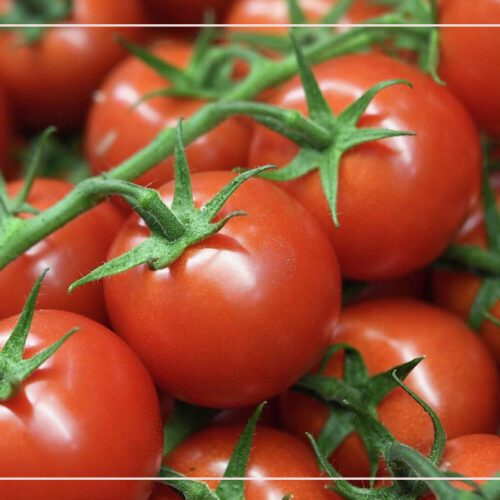Agriculture is considered one of the essentials of life, that provides basic necessities and contributes to the country’s economy by creating employment opportunities, which significantly reduces poverty.
It also improves political matters when exporting crops to foreign countries, enhancing international relations.
There are many crops that receive attention, such as vegetables and fruits like potatoes, tomatoes, kiwi, mango, and others.
One of the most important available fruits is mango, which has significant importance that including:
- Mango is considered one of the nutritional factors that maintain the health of the skin, and complexion, many women use it as a facial mask.
- Mango contains a high percentage of vitamin C, which reduces wrinkles and boosts the body’s immunity.
- Mango is important for eye health and vision because it is rich in high levels of vitamin A.
- It improves digestion while maintaining the health of the digestive system due to its various fibers.
- Mango is the primary source of vitamin A, beta-carotene, alpha-carotene, and flavonoids.
Mango planting
Many countries are interested in cultivating mangoes due to their importance in various social, political, and economic fields.
And the main conditions for mango cultivation are:
- Light should be available, as mango seedlings need indirect sunlight. When the plant starts growing, it is necessary to provide as much light as possible by moving it outdoors.
- Water should be provided, as mango trees grow in humid and dry climates and the seeds require a lot of water for their growth.
- Soil is one of the most important factors, as it should be rich in nutrients.
- Liquid fertilizers should be added throughout the growing of trees and fertilizers should be put in once a month or during winter.
Mango cultivation
Mango requires special agricultural soil, it is a tropical fruit that requires specific conditions and can grow in hot and dry weather.
The most suitable agricultural lands for mango are:
- Mango can be grown in moderately acidic and well-drained soil with a water level of at least 1.5 meters.
- The lands can be sandy and light, no problem if the soil is low fertility.
- They can grow in volcanic soils.
- Mango can grow in lands with high lime content and high water level.
- It can also be cultivated in lands that contain fine gravel, which helps in soil aeration.
- It can be grown in a mixed soil with clay and sand, free from salts, with good irrigation, fertilization, and inoculation.
Mango Seed Planting
It is important to know how to plant mango seeds for all farmers.
And there are basic steps must be followed for mango seed planting, including:
- Extract all the seeds from the mango fruit and clean them from fruit residues.
- Open the seed coat with a sharp knife to obtain the inner seed.
- Fill a planting container with suitable soil, and choose a container with drainage holes.
- Put some water to the soil, take the seeds and place them in a hole with the top facing upwards.
- The seeds should be covered with 1.5cm of soil.
- Spray the plant with water whenever it dries out, keep it in the open air when it becomes strong.
Mango Tree
The mango tree is considered an evergreen tree that reaches a height of at least 15 meters or more, depending on the variety of tree.
Mangoes are cultivated in tropical, subtropical, and semi-tropical regions such as India, the Chinese subcontinent, China, and Thailand.
Some of the key steps for caring for a mango tree are:
- The deep roots of the tree should be adequately watered to become saturated.
- Allow the surface of the soil around the tree to dry before watering again.
- Avoid watering the tree for two months before flowering and resume watering when fruit production begins.
- Put fertilizer to the soil of the mango tree using nitrogen fertilizers three times a year.
- Prune the tree after 4 years to eliminate weak branches.
- Monitor for tree diseases and apply insecticides.
Mango Planting Method
Each type of plant and fruit has a specific method of cultivation, where each one requires a certain climate, whether hot or cold weather.
Mango trees are known to grow in tropical, subtropical, and equatorial regions, making them the most suitable for mango trees.
Here we will mention the most prominent method of planting mango, which are as follows:
- Mango trees cannot tolerate cold weather and winds, so it is necessary to choose a suitable area for cultivation.
- Windbreaks should be built along with other means of protection.
- The cultivation is done through seeds, where seedlings can be produced through seeds or purchased ready-made.
- Before planting the seedlings, make sure that the soil is tilled and weeded, and planted in well-drained, ventilated, and fertile soil.
- Attention should be given to the seedlings, as they need to be watered continuously, especially in the summer.
- They require a relative amount of water, which varies according to the temperature, nature of the region, and the soil’s ability to retain water.
High Density Planting In Mango
Mango trees are characterized by their dark shiny foliage, and mangoes have an oval or lanceolate shape with long necks and a leathery texture, with uneven sides.
One of the most popular techniques recently is HDP, which stands for high density planting, aiming to improve agricultural production.
Some of advantages are:
- This technique increases fruit quantity and improves fruit quality.
- It reduces the expenses of production and workers.
- It enables the production of fruit crops using machinery.
- And It facilitates the use of fertilizers, water, solar radiation, fungicides, and herbicides.
- Also It is the best technique for utilizing land and its resources.
- It ensures high-quality fruit crop production.
- It increases the yield for agricultural land.
how to grow a mango seed in water
One of the most economical ways is to utilize the fruit seeds and mango seeds, for replanting, which reduces the costs of buying seedlings for cultivation.
There are several steps for the growth of mango seeds, which are:
- The remains of the fruit should be removed well from around the seed before it is planted.
- You have to leave it for a day and a half to dry.
- Then use a knife to remove the solid outer skin.
- The seeds are placed in a container with water and exposed to sunlight.
- We leave the seed in the water for a week or 3 weeks until it starts sprouting.
- Then we transfer it to be planted in a container with organic fertilizer.
- After that, it should be transferred to be planted in the external soil.
Growing mango at home
You can cultivate mango at home because it is a fruit that can grow in various climatic conditions using mango seeds, and they should be used immediately without leaving or storing them for a long time.
However, it is important to follow tips on how to fertilize them and the timing of harvesting and fruit picking.
Some of the most important tips for growing mango at home are:
- The seed kernel is cut and removed from the outer husk.
- The seed is placed in a moist tissue and inside a plastic bag until green or brown branches appear.
- We use more than one seed and place them horizontally in the soil and cover them with a layer of soil.
- The seeds are watered daily and placed at an average temperature between 24 to 30 degrees, once in sunlight and once in the shade.
- Organic fertilizer is put in the soil to make it rich and help the fruit grow.
- After about 40 days, the fruit begins to grow.
Mango planting time
There are specific times when mango or any fruit should be planted, but it should be done following the instructions based on the condition and weather.
The better time to plant mango is:
- It should be planted during the months of July and August, but ripe fruits should be taken and planted immediately to avoid losing their vitality in high temperatures.
- If you have a field in your village that is suitable to plant mangoes,then the best time to plant them is in spring, specifically in the months of March and April, or in autumn, mango seedlings should be protected from cold and rain.
- Mango trees require a tropical climate and can grow in a dry and hot climate like California, or in a humid area with good ventilation.
- And it Should be exposed to sunlight.
Common Question
Mango trees do not require a lot of water, but during the first week they should be watered daily, and after that they can be watered once or twice a week during the first year. If rainfall in the area is low, you have to water the mango trees.
Mango trees grow in different types of soil, such as sandy, light, and dry soil. It is preferred that the soil be deep and acidic. They need a sunny place with good access to light, and mango trees should be exposed to sunlight for at least 8 hours a day. Seedlings should be planted in spaced locations.
Mango trees usually start producing from the age of 4 to 5 years, and the production increases until the tree reaches the age of 15 years.
The most suitable soil for mango cultivation is sandy loam soil, moderately acidic, and well-drained. Limestone and volcanic soils are also suitable for cultivation, but moderately acidic sandy soil is the best.
The fertilizer is ammonium nitrate, and it should be used in a good way in specific doses. Mango trees can tolerate heat, but they are negatively affected by rain and wind, which can cause diseases and expose them to insects that eat them.






